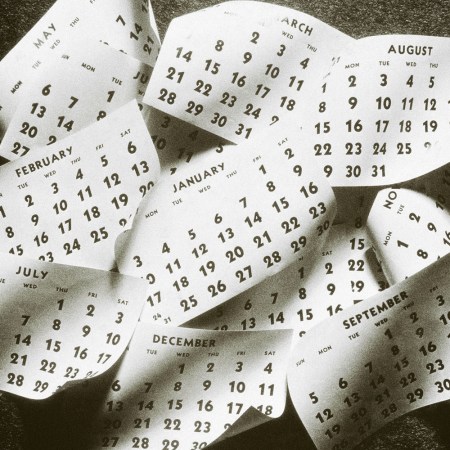According to research from Asana, a project management platform, about 60% of the average employee’s time is spent doing “shallow work.” What is that, exactly? It’s the busywork: the email-combing, the meetings about meetings, the unresolved notes on nearly done decks. It’s the morning stuff that torpedoes most of your afternoons.
Shallow work is inevitable in any office job, especially in the hybrid-work era. But its discursive, humdrum nature is at odds with the ideating that helps companies (and you!) evolve and grow. Who has the energy to think three quarters ahead when just getting through the next three hours feels insurmountable?
Besides, even on the exceedingly rare occasions that all of one’s shallow work tasks are fully handled and up to date, life’s day-to-day distractions like to slot in to take their place. Texts from family, appointments you need to make, notifications for upcoming events, etc. All told, knocking out these pings can feel productive — and for some people, it might even feel really good — but it also leaves little energy left over for inspiration or innovation.
Whenever you do need to convert on something important and creative, then, you’re left feeling thoroughly out of practice. How the hell do you put a proposal together, again? Or draft a cover letter? Or figure out new ways to motivate your employees? And how do you accomplish any of those things without getting dragged back into shallow work in the (almost certain) event that new iterations of it emerge?
The answer is “deep work,” a term coined back in 2016 by Cal Newport, a computer science professor at Georgetown University. Asana defines it as “a state of peak concentration that lets you learn hard things and create quality work quickly.” According to Newport, who’s written a book on the subject, and regularly advocates for digital minimalism as way to mitigate the self-damning impacts of what he calls the “the hyperactive hive mind,” deep work is the brain at its best.
Instead of six, eight or 10 hours a day of shallow work, what about codifying four non-negotiable, distraction-free “deep” hours of work each day? If four is impossible, due to the rigors of your job, how about two? Or even just one? How much would you be able to accomplish? What ideas might you come up with once you can acknowledge that “being available” actually isn’t the be-all, end-all of work? What sort of asset might you become to a business once you’re actually available to yourself?
Ice Bath Business Meetings Are a Thing Now, Apparently
Ever sold a company while sitting in near-freezing water?Here’s what a perfect “deep work session” looks like to me: I’ve had my exercise and my coffee, my phone is in the other room, my water bottle is next to me, there’s a “brown noise” playlist in my ears. I’m going to ignore Slack and Gmail for a while. Internet research is critical to my job, so I’m not putting any browser blockers on, but I won’t be mindlessly scrolling Twitter or reading baseball profiles in The Athletic. What follows is up to three hours of uninterrupted writing. It’s a bit of a flow state, I guess, though I pride myself on self-editing and tend to chew on copy along the way. The only way to a clean, cogent, completed paragraph is right through.
Deep work is really hard, but it’s also tremendously rewarding. When embraced, it can reorient your relationship to work. We greet most deep work-worthy projects with the same beleaguered sensibility we ascribe to shallow work nonsense — get this off my plate, ASAP. But deep work fare requires (and deserves) your full attention. And it can function as a reminder of why you got into whatever business you got into in the first place. Thinking up new solutions feels good, and has a much longer tail than the dopamine blast of conquering a to-do list.
Newport proposes various deep work “types,” from the monastic (authors and scientists, for whom this stuff comes a little more naturally), to the bimodal (splitting your schedule down the middle; e.g., I’ll only do deep work once I finish my shallow work, or vice versa), to the journalistic (deep work whenever you can find the time). At the end of the day, you understand your job and your proclivities best, and some deep work is better than none. But I’m actively looking to channel the fourth type, defined as rhythmic, which endeavors to make deep work a daily occurrence, within a set period of hours. Specifically, I seem to write well from 4 to 7 p.m., which is also a period that people don’t tend to come calling.
None of this should discourage you from answering those calls, or your emails or texts, either. (And, obviously, don’t ignore your kids.) But it’s important to recognize the ways in which accommodating every one of life’s pings can pull you away from peak brainflow. The phrase “attention residue,” which appeared in this 2009 study, is a resonant one here. Our minds have an extremely tough time getting back into a task, once we’ve entertained the idea of some other responsibility.
Ultimately, deep work is a rare thing that creates rare work. And much harder than doing it is simply deciding you’re going to do it. If you have the time and the means, it can help to jump-start your sessions with what some have called a “grand gesture” (the prime example is Bill Gates’s tradition of heading to a cabin in the woods for a week, in service of big thoughts), but even just an attempt this afternoon will do. Start small, set your terms and give it your best shot. We usually regret an hour spent scrolling through Instagram. Few have left a personal brainstorm feeling they’ve wasted their time.
The Charge will help you move better, think clearer and stay in the game longer. Subscribe to our wellness newsletter today.




















